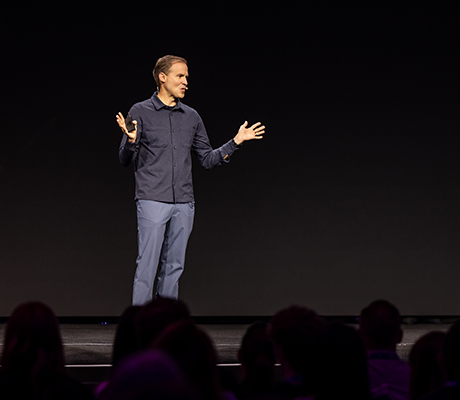Pattern 2021 Cyber Weekend Trends & Insights
You may have heard Cyber Weekend underperformed as compared to previous years, but do you know the categories affected and the trends that caused the slump?
If there was any hope that Black Friday and Cyber Monday 2021 would be a return to normal after the uncertainty of 2020, that hope was effectively doused as economic uncertainty impacted sales across the board. This year’s Turkey 5 saw less traffic and less excitement as supply chain issues impacted the market and shoppers shifted their holiday shopping habits. Here’s a look at some of the trends that defined Black Friday and Cyber Weekend 2021 and what they spell for future holiday shopping.
Black Friday underperformed pre-pandemic levels
While there was lots to be optimistic about this year, that optimism was short lived. In general, many brands underperformed on Black Friday, which was a somewhat muted event compared with the 2020 sales event. Black Friday traffic at retail stores dropped 28.3% from pre-pandemic levels in 2019, and even online shopping on Black Friday took a dip.
Though online traffic was up 47.5% year over year, sales fell short of breaking the record of $9 billion spent the Friday after Thanksgiving in 2020. According to Adobe Analytics, who analyzes more than one trillion visits to U.S. retail sites, this year was the first ever that growth reversed from the year prior. That said, the market is not unanimous.
Mastercard Spending Pulse reported that Thanksgiving weekend retail sales across the entire market went up 14% year over year. While that may include a significant number of purchases outside the realm of holiday shopping, it may also suggest Black Friday sales were flat and slightly waning rather than dramatically down. Mastercard also reported, however, that ecommerce sales, which have been consistently skyrocketing year to year, only grew 4.9% from last year.
A few categories stood out for growth
According to Mastercard, three categories that were key drivers for Cyber Weekend’s growth were apparel (+51.2%), department stores ( up +19% due to comping such a bad year over year ), and jewelry (+78.4%).
2020 shopping habits stuck around
Because so many brick and mortar businesses changed their operations and/or closed last year due to Covid-19, omnichannel ecommerce became a critical player in the economy, and online marketplaces saw a significant bump in sales and traffic as a result. With more reasons to be cautious and fewer in-person options for purchasing things like groceries and other goods, consumers were trained to shop online year long, and that training carried over into 2021.
Many shoppers avoided going out for Black Friday because they could simply purchase products online at similar prices. There was also a renewal of Covid-19 fears as news of the Omicron variant dropped in the days leading up to Black Friday. Many shoppers who may have been hesitant to get back to business as usual on Black Friday this year saw a renewal of that hesitancy.
Discounts weren’t as deep
While there were a few “killer deals” offered on Amazon during the Cyber 5, there weren’t many to be found elsewhere. In general, consumers had fewer financial incentives to get out and shop on Cyber Weekend in 2021. The average promotional discount across major retailers heading into Black Friday was 33.4%, compared to an average discount of 37% that was offered in October and the early part of November. Cyber Monday discounts were also weak this year. Discount levels for electronics were at -12% vs. -27% last year and discount levels for appliances were at -8% vs. -20% last year, in just two examples.
Consumers started shopping early
Earlier holiday shopping was in part the result of a major media scare that pushed consumers to do their holiday shopping earlier due to the fear that supply chain issues would prevent their gifts being in stock had they waited till the traditional post-thanksgiving buying period. A survey from the National Trade Federation, the retail industry’s leading trade group, found that 61% of consumers had already started purchasing holiday gifts before Thanksgiving. Pre-Black Friday sales were actually quite good, but those sales were spread throughout the months of October and November, and monthly sales overall were negatively impacted by the lower Turkey 5 turnout. Interestingly, this year’s early holiday shopping trend mirrored last year’s, but for different reasons. In 2020, Amazon pushed their Prime Day event back to October, and it ended up hurting Black Friday sales because consumers had already done their Christmas shopping by the time it started. It’s possible some shoppers continued that trend this year.
Stock outs caused issues
The consumer fear of stock puts was based in fact. Adobe Analytics reported that out-of-stock messages on retailers’ websites were up 124% through Friday versus pre-pandemic levels. On Cyber Monday, the number of out-of-stock messages was up 8% compared to the week before. The most compelling statistics are those for the entire month. In total, during the month of November (Nov. 1 - Nov. 29), out-of-stock messages went up a whopping 169% vs. pre-pandemic levels (January 2020) and 258% vs. November 2019 levels. Adobe has predicted that this trend will continue through the end of the year.
Shopping carts grew, but so did inflation
Consumers saw the final price point of their shopping carts jump 13.9% on Cyber Monday, indicating there are shoppers buying bigger ticket items, but there is a wide gap between the spend of low-income shoppers vs. high-income shoppers. Rising prices across the board for fuel, groceries, and other products meant consumers spent less during holiday sales events.
A record high of 11.5% of Americans said they will not be buying holiday gifts this year, and high-income shoppers are expected to spend five times more than low-income shoppers, according to a survey by Deloitte. The Bureau of Labor Statistics reported that consumer prices grew 6.2% in October compared to a year ago, and that inflation is reflected in online marketplaces where you typically see lower prices.
One report from Profitero tracked 20,000 of Amazon’s most popular products, identifying 1,600 that were among the most popular in October 2020 and October 2021. They found the price of those products had increased 7.5% in a year. Other marketplaces had higher prices on the same products—Walmart’s cost 4% more than Amazon’s, and Target’s were 15% more expensive. Combined with consumer fears and stock outs, inflation is a significant reason why Black Friday fell short this year.
Brick and Mortar closings boosted ecommerce
While Cyber 5 sales didn’t perform exceptionally well, there are some highlights from the week that are worth noting. Thanksgiving Day in-person sales dropped 90.4% from 2019, but the holiday saw a year over year lift in online sales as armchair shoppers cozied up to buy holiday gifts online after turkey dinner, making Thursday the best day of the sales event.
What this means for brands
In the early 2000s, it was a common joke that each year Black Friday got earlier and earlier, creeping into Thanksgiving day, and even the Wednesday before Thanksgiving. That punchline has become a reality. While a lot of holiday shopping has historically been done during the Turkey 5, the sales event has become less relevant this year. For two years in a row, we’ve seen early shoppers move early on gift-buying.
That being said, there will always be the ones who wait. Late holiday shoppers will still be purchasing gifts well into December, and many of them will run into supply chain woes.
The best thing that your brand can do right now is keep your product in stock online so that when your competitors go out of stock, your product will be ready for shoppers to purchase. It’s especially important to stay in stock on Amazon, because that’s the first place many customers will look. Need help managing your inventory, distribution, and marketplace strategy? Contact us to learn more about Pattern as a global marketplace manager.


.jpg)







.jpg)